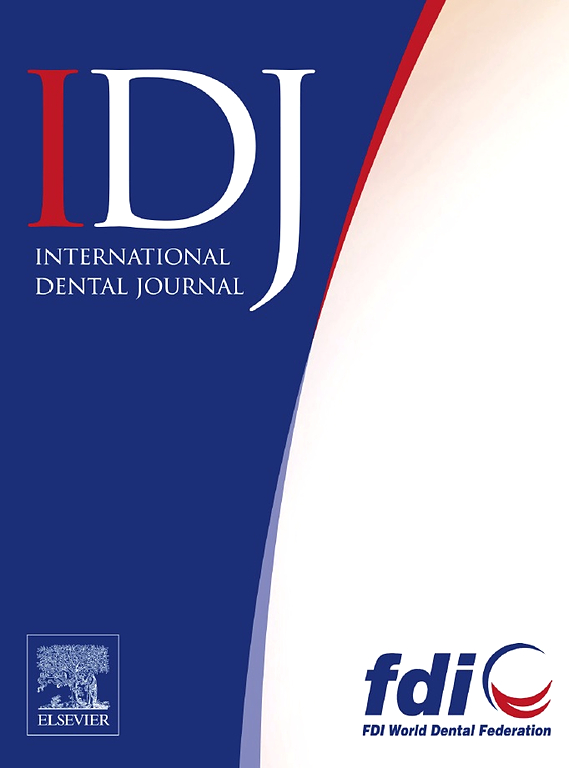阿扎尔队列人群中的抑郁和未治疗的龋齿:一项横断面研究
IF 3.2
3区 医学
Q1 DENTISTRY, ORAL SURGERY & MEDICINE
引用次数: 0
摘要
背景:龋齿和抑郁症在世界范围内普遍存在。本研究旨在调查阿扎尔队列人群中抑郁症、抗抑郁药物的摄入和未治疗的蛀牙(DT)之间的关系。方法本横断面研究采用了来自Azar队列研究的数据。阿扎尔队列于2014年在伊朗西北部的Shabestar开始,包括15,006名年龄在35至70岁之间的成年人。大部分数据是通过问卷调查和口试收集的。在本研究中,对阿扎尔队列中被诊断为抑郁症的个体进行了未经治疗的DT数量评估。参与者被分为三组:服用药物的抑郁症患者;没有使用药物治疗的抑郁症患者;还有一个比较组。对照组是从阿扎尔队列(Azar Cohort)中按年龄和性别匹配的非抑郁参与者中挑选出来的。排除使用全口义齿的个体。结果抑郁症组1369例,对照组2813例进行数据分析。DT的总平均值(SD)为2.5±3.3。回归模型显示DT与抑郁之间存在显著关系(P <;措施)。此外,抑郁组DT与未接受药物治疗之间存在显著正相关(P <;措施)。结论抑郁症患者的DT发生率较高,尤其是未接受药物治疗的患者。这些发现突出了迫切需要针对抑郁症患者制定有针对性的口腔健康促进措施。本文章由计算机程序翻译,如有差异,请以英文原文为准。
Depression and Untreated Dental Caries Among the Azar Cohort Population: A Cross-Sectional Study
Background
Dental caries and depression are prevalent worldwide. This study aimed to investigate the relationship between depression, the intake of anti-depressive medication, and the presence of untreated decayed teeth (DT) in the Azar cohort population.
Methods
This cross-sectional study utilised data obtained from the Azar cohort study. The Azar cohort began in 2014 in Shabestar, northwest of Iran, encompassing 15,006 adults aged 35 to 70. Most of the data were collected through questionnaires and oral examinations. In the present study, individuals diagnosed with depression from the Azar Cohort were assessed with respect to the number of untreated DT. The participants were divided into three groups: individuals with depressive disorder who were using medication; individuals with depressive disorder who were not using medication; and a comparison group. The comparison group was selected from non-depressed participants of the Azar Cohort, a group matched by age and gender. Individuals with complete dentures were excluded. Modifiers were adjusted for using regression analysis
Results
Data for 1369 individuals in the depression group and 2813 individuals in the comparison group were analysed. The overall mean (SD) for DT was 2.5 ± 3.3. The regression models indicated a significant relationship between DT and depression (P < .001). Additionally, there was a significant positive relationship between DT and not receiving medication in the depressed group (P < .001).
Conclusion
A higher prevalence of DT was observed among individuals with depression, especially those not receiving medication. These findings highlight the urgent need for targeted oral health promotion initiatives specifically tailored to individuals suffering from depression.
求助全文
通过发布文献求助,成功后即可免费获取论文全文。
去求助
来源期刊

International dental journal
医学-牙科与口腔外科
CiteScore
4.80
自引率
6.10%
发文量
159
审稿时长
63 days
期刊介绍:
The International Dental Journal features peer-reviewed, scientific articles relevant to international oral health issues, as well as practical, informative articles aimed at clinicians.
 求助内容:
求助内容: 应助结果提醒方式:
应助结果提醒方式:


